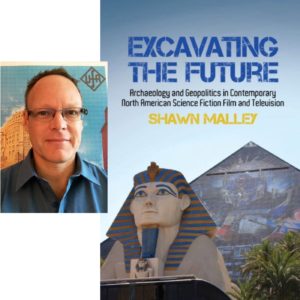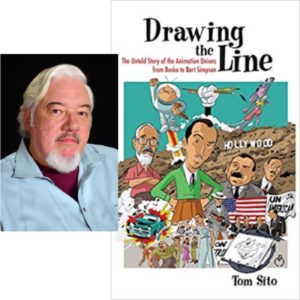Sci-fi and archaeology – “Excavating the Future” (Liverpool University Press, 2018) – Shawn Malley interview
Podcast: Play in new window | Download
Subscribe: Apple Podcasts | RSS
 Shawn Malley is a Canadian professor interested in the Victorian period. We talk about his latest book that discusses the intersection between archaeology, science fiction and spectacle.
Shawn Malley is a Canadian professor interested in the Victorian period. We talk about his latest book that discusses the intersection between archaeology, science fiction and spectacle.
1:45 – Shawn talks about how he got into writing on science fiction. He’s a Victorianist by trade.
4:09 – Shawn talks about how he divides the book and what the three parts are about.
8:04 – We touch on steampunk and Victorian tropes.
11:00 – We discuss Superman and archaeology.
21:04 – We discuss how Shawn chose what works to research.
25:45 – Shawn talks about analyzing tv and film media.
27:45 – Shawn is also interested in the technologies used to create sci-fi film and tv and what those say about how we approach sci-fi.
45:00 – The book has about 45 stills and Shawn wanted many more.
48:29 – Shawn’s work can be found in University libraries. He has a page on Bishop’s University of Quebec.
Links of Interest
Excavating the Future https://liverpooluniversitypress.co.uk/products/108267
For more of “The Art and Design of Sci-Fi and Fantasy, Mystery and Horror” please follow me on Facebook at crisalvarezwlc, on youtube at Cris Alvarez and on Instagram @crisalvarezscifi
Guests: Shawn Malley
Host: Cris Alvarez
Tags: science fiction, archaeology, babylon, iraq, smallville, Manticore, films, Stargate, Ancient Aliens, Indiana Jones, Crystal Skull, Superman, cyborgs, Battlestar Galactica, cylons, Star Trek, Transformers, District 9, ISIS
 Tom Sito has been a film animator for decades and has worked on some of Disney’s biggest films. He’s written a book on Disney history based on interviews with Disney animators who were working there during the 1941 strike and we spoke about the book.
Tom Sito has been a film animator for decades and has worked on some of Disney’s biggest films. He’s written a book on Disney history based on interviews with Disney animators who were working there during the 1941 strike and we spoke about the book. Nicholas Parisi is a musician and vocalist and serves on the board of the Rod Serling Memorial Foundation. He’s recently written a book analyzing almost all of Rod Serling’s work and we discuss the book and Rod Serling’s works.
Nicholas Parisi is a musician and vocalist and serves on the board of the Rod Serling Memorial Foundation. He’s recently written a book analyzing almost all of Rod Serling’s work and we discuss the book and Rod Serling’s works.